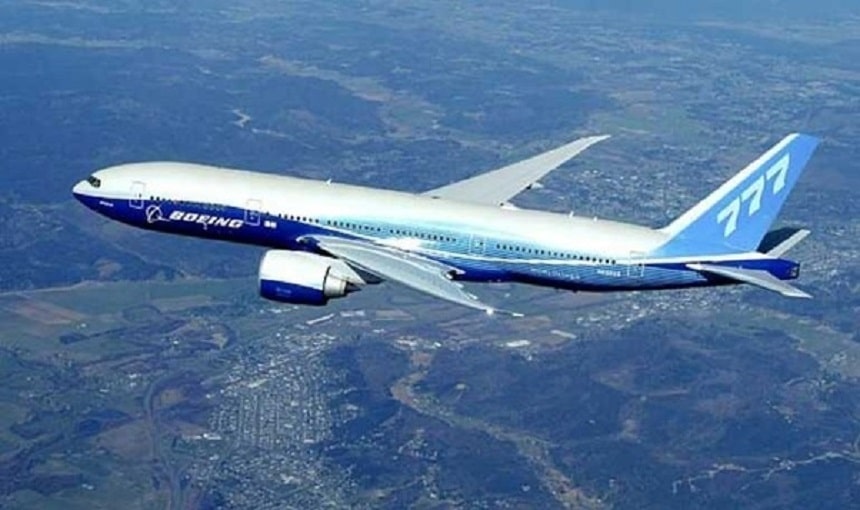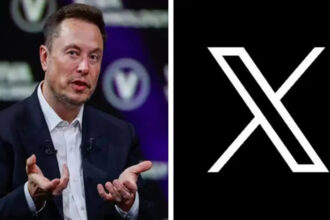The Boeing 777, a testament to the advancements in aviation, is celebrated for its remarkable range and operational efficiency. It can fly up to 10,809 miles (17,395 kilometers) without fueling
This article aims to delve into the fascinating realm of this iconic aircraft, covering its origins, specifications, and the intriguing inquiry: what is the maximum flight duration of the Boeing 777 without refueling?
About Boeing 777 Flight
The Boeing 777, commonly known as the “Triple Seven,” stands as a prominent figure in commercial aviation. Manufactured by Boeing Commercial Airplanes, this wide-body, long-range jet airliner boasts a rich history, beginning its development in the 1990s as a successor to aging wide-body aircraft such as the Boeing 747 and McDonnell Douglas DC-10.
The 777 which is also known as the world’s largest twinjet was rolled out in April 1994, and first flew in June. The 777 entered service with the launch operator United Airlines in June 1995. Longer-range variants were launched in 2000, and first delivered in 2004
Distinguished by its twin-engine, twin-aisle design, the Boeing 777 typically accommodates between 301 to 368 passengers across three classes. Its aerodynamic efficiency, lightweight construction, and advanced engines contribute to its reputation for reliability, efficiency, and passenger comfort.
The Boeing 777 family encompasses several variants, including the 777-200, 777-200ER (Extended Range), 777-200LR (Longer Range), 777-300, and 777-300ER (Extended Range). Notably, the latest additions to the family are the 777-8 and 777-9 models, part of the Boeing 777X series.
Powered by engines such as the General Electric GE90, Rolls-Royce Trent 800, and Pratt & Whitney PW4000 series, the Boeing 777 delivers exceptional performance, with the 777-200LR and 777-300ER models capable of flying over 14,000 kilometers (8,700 miles) nonstop.
Technological advancements are integral to the Boeing 777’s success, featuring advanced avionics, fly-by-wire controls, and state-of-the-art cockpit instrumentation, enhancing safety, efficiency, and pilot convenience.
The Boeing 777’s market success is evident through its widespread adoption by airlines worldwide, serving a diverse range of routes from long-haul international flights to shorter domestic journeys. Its versatility and passenger-centric design have made it a favorite among both airlines and travelers.
The Boeing 777 achieves flight through a combination of aerodynamic principles and advanced propulsion systems. Its wings are designed to generate lift efficiently, while powerful jet engines provide thrust to propel the aircraft forward. Additionally, sophisticated avionics systems and flight control technologies ensure safe and stable flight operations.

How long can a Boeing 777 fly without refueling?
The Boeing 777 can fly up to 10,809 miles (17,395 kilometers) without refueling, with a flight time of up to 19 hours when fully loaded with passengers and cargo.
Nevertheless, variables like wind conditions, altitude during flight, and payload can influence the effective range achievable without refueling. Additionally, the aircraft incorporates a fuel-efficient functionality known as the “Eco Throttle,” capable of augmenting the range by as much as 10%.
How Long Can a Jet Fly Without Fueling?
The endurance of a jet aircraft without refueling varies depending on factors such as fuel capacity, engine efficiency, and operational constraints. A mid-size jet can fly for four to six hours without refueling, while a large jet can fly for ten or more hours.
While some modern jets like the Boeing 777 can fly for over 15 hours without refueling, smaller aircraft may have shorter endurance capabilities. Pilots and airlines carefully plan flight routes and fuel stops to optimize efficiency and safety.
Aircraft with the Longest Range
Several aircraft are known for their exceptional range capabilities. Apart from the Boeing 777, other notable long-range aircraft include the Airbus A350 XWB, Boeing 787 Dreamliner, Airbus A380, and the forthcoming Boeing 777X series.
10 Longest Range Aircraft in the World
Sure, here’s some information about each of the aircraft listed:
- Boeing 777-200LR: The Boeing 777-200LR (Longer Range) is an ultra-long-range variant of the Boeing 777 family. It holds the record for the longest commercial flight by distance, capable of flying up to 15,843 kilometers (9,845 miles) nonstop.
- Boeing 777-300ER: The Boeing 777-300ER (Extended Range) is a longer-range variant of the Boeing 777 series. It offers increased passenger capacity and extended range, making it a popular choice for long-haul flights.
- Airbus A350-900ULR: The Airbus A350-900ULR (Ultra Long Range) is a variant of the Airbus A350 XWB (Extra Wide Body) series designed for ultra-long-range flights. It features enhanced fuel capacity and aerodynamics to enable flights of up to 18,000 kilometers (11,000 miles) nonstop.
- Boeing 787-9 Dreamliner: The Boeing 787-9 Dreamliner is a member of the Boeing 787 family known for its fuel efficiency and composite materials construction. It offers a longer range compared to its predecessor, the 787-8, making it suitable for long-haul routes.
- Airbus A350-1000: The Airbus A350-1000 is the largest variant of the Airbus A350 XWB series. It features an extended fuselage and higher passenger capacity, along with enhanced range capabilities, making it ideal for long-distance travel.
- Airbus A380: The Airbus A380 is the world’s largest passenger airliner, known for its double-deck configuration and spacious interior. While it is primarily used for high-capacity short- to medium-haul flights, some airlines operate it on long-haul routes, benefiting from its impressive range.
- Boeing 787-10 Dreamliner: The Boeing 787-10 Dreamliner is the largest variant of the Boeing 787 family, offering increased passenger capacity and improved fuel efficiency. It is suitable for medium- to long-haul routes, providing airlines with flexibility and cost savings.
- Boeing 777-8: The Boeing 777-8 is a variant of the Boeing 777X series, featuring advanced aerodynamics and fuel-efficient engines. It offers extended range capabilities, making it suitable for long-haul flights while accommodating fewer passengers compared to the 777-9.
- Boeing 777-9: The Boeing 777-9 is the largest variant of the Boeing 777X series, known for its advanced technology and increased passenger capacity. It offers impressive range capabilities, making it well-suited for long-haul travel with enhanced comfort and efficiency.
- Airbus A330-900neo: The Airbus A330-900neo (New Engine Option) is a variant of the popular Airbus A330 series, featuring modernized engines and aerodynamics for improved fuel efficiency and range. It offers versatility for both short- and long-haul routes, making it a popular choice among airlines.















